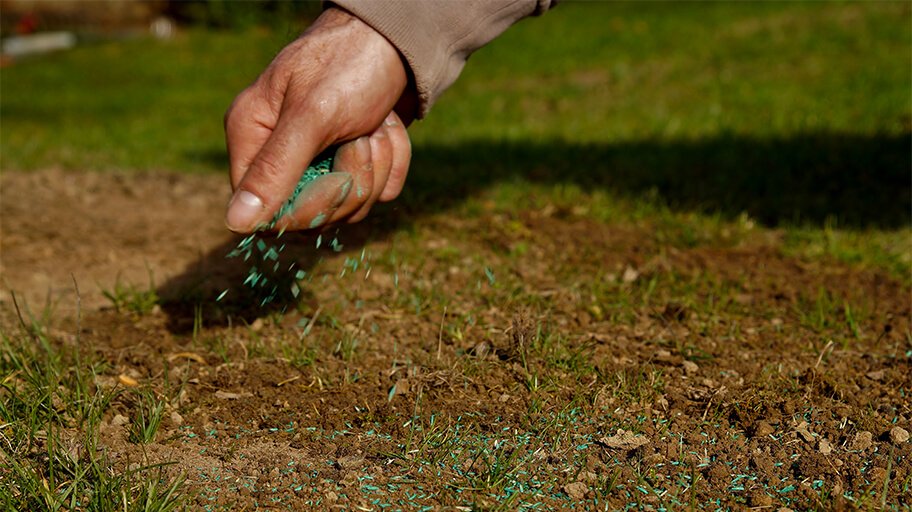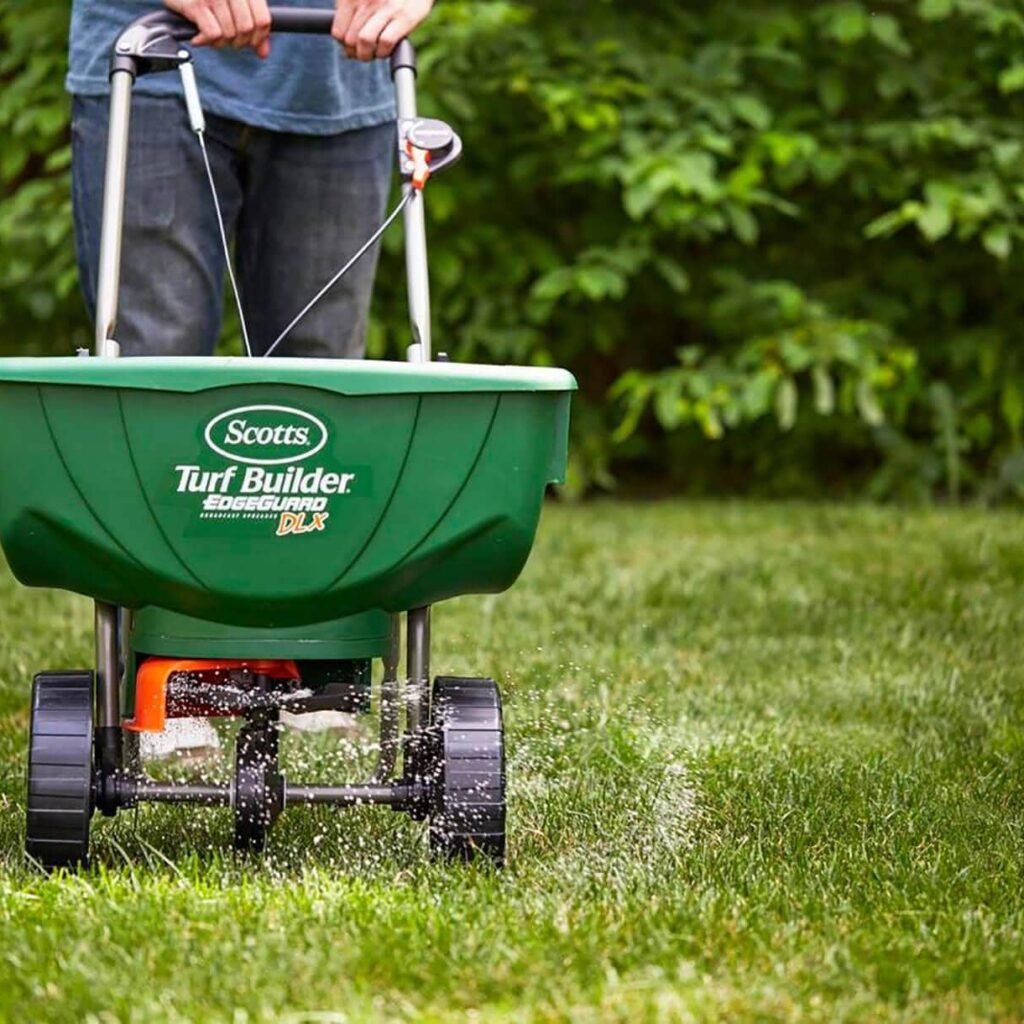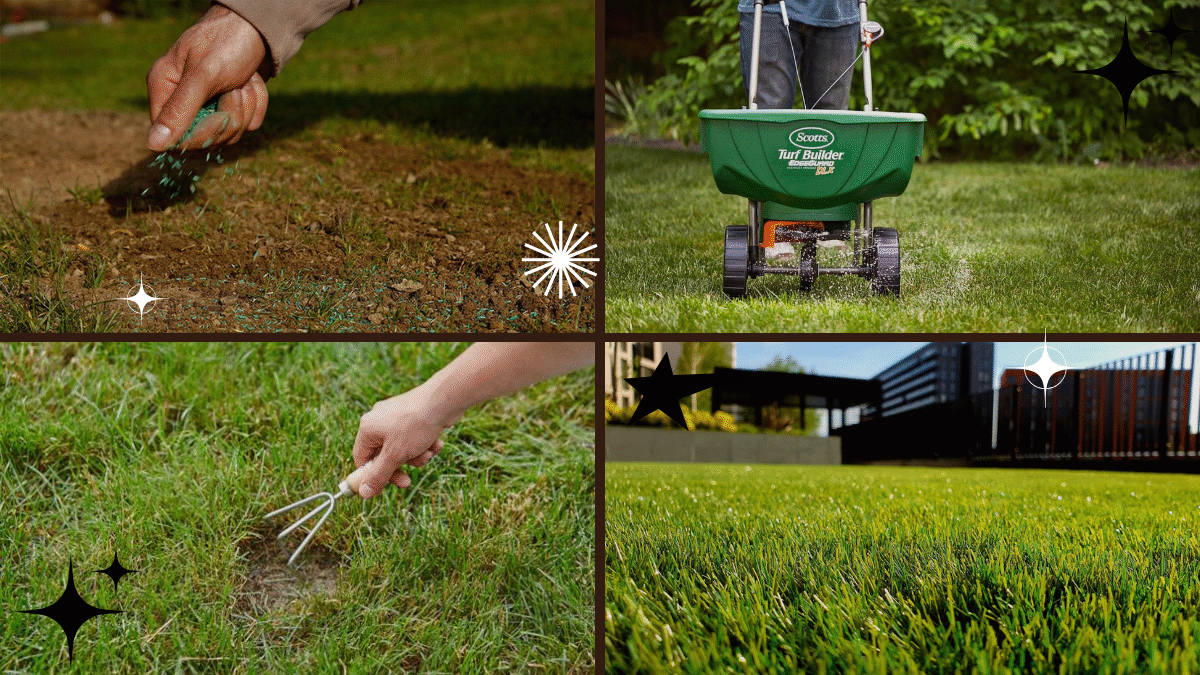A lush, green lawn is one of the most beautiful and inviting features of any yard. But over time, even the healthiest lawns can develop bare patches, thinning grass, or areas where weeds have taken over. The good news? You don’t need to rip everything out and start from scratch. Planting grass seed on an existing lawn — a process called overseeding — is an effective, affordable, and eco-friendly way to rejuvenate your lawn and restore it to its former glory.
In this detailed guide, we’ll walk you through everything you need to know about how to successfully plant grass seed on an existing lawn — from when to do it, what tools and supplies you’ll need, how to prepare your lawn, and the best aftercare tips to guarantee thick, healthy, beautiful grass.

Why Should You Overseed Your Lawn?
Before we get into the how, let’s talk about why overseeding is worth your time:
- Fills in bare patches and thinning areas
- Crowds out weeds naturally
- Improves the lawn’s color, density, and resilience
- Helps your lawn recover from drought, disease, or insect damage
- Allows you to introduce better, more modern grass seed varieties
Whether you want to touch up a few problem spots or give your entire yard a refresh, overseeding is one of the most cost-effective ways to improve your landscape.

When Is the Best Time to Plant Grass Seed on an Existing Lawn?
Timing is key when it comes to overseeding. You want to give the new grass seeds the best possible conditions to germinate and establish.
- Cool-Season Grasses (like Kentucky Bluegrass, Fescue, and Ryegrass):
Best overseeded in early fall (late August to early October) or early spring (March to April) when temperatures are between 60°F and 75°F. - Warm-Season Grasses (like Bermuda, Zoysia, and St. Augustine):
Best overseeded in late spring to early summer (April to June) when soil temperatures are consistently warm.
Pro tip: Fall is generally considered the ideal time for overseeding because the cooler temperatures, increased rainfall, and reduced weed competition create optimal conditions for seed germination.

What You’ll Need
Before getting started, gather these supplies:
Tools:
- Lawn mower
- Metal rake or dethatcher
- Garden hose or sprinkler
- Seed spreader (broadcast or drop type)
Materials:
- High-quality grass seed (suited to your region and lawn type)
- Lawn starter fertilizer (optional but recommended)
- Topsoil or compost (optional for topdressing)

Step-by-Step: How to Plant Grass Seed on an Existing Lawn
1. Choose the Right Grass Seed
Select a high-quality seed blend suited to your climate, lawn conditions (sun vs. shade), and your existing grass type. Look for disease-resistant, drought-tolerant, and fast-germinating varieties for best results.
Examples:
- Shady areas: Fine Fescue blends
- Sunny lawns: Perennial Ryegrass or Kentucky Bluegrass
- Southern lawns: Bermuda or Zoysia
Check seed packaging for information about coverage rates.
2. Mow the Lawn Short
Cut your existing grass to a height of about 1.5 to 2 inches. This reduces competition for light, improves soil contact for new seeds, and makes it easier to see bare spots. Collect and remove all grass clippings.
3. Rake or Dethatch the Lawn
Use a metal rake or dethatching tool to remove dead grass, leaves, and debris. This step also roughens the soil surface, creating better contact points for seeds to settle into.
For heavily compacted soil, consider aerating your lawn with a core aerator to allow water, air, and nutrients to reach the roots more easily.
4. Apply Grass Seed Evenly
Using a broadcast spreader or drop spreader, evenly distribute the grass seed over the entire lawn, focusing extra seed on bare or thin areas.
Coverage tip: Follow the seed package’s recommended overseeding rate, usually listed in pounds per 1,000 square feet.
For small patchy areas: You can scatter seed by hand.
5. Lightly Rake the Seeds Into the Soil
After spreading the seed, gently rake the area to help mix the seeds into the top 1/8 inch of soil. This improves seed-to-soil contact — a crucial factor for germination.
6. (Optional) Topdress with a Thin Layer of Soil or Compost
For improved germination rates, sprinkle a very light layer (no more than 1/4 inch) of screened topsoil or compost over the seeded area. This helps retain moisture, protects seeds from birds, and adds nutrients.
7. Water the Lawn Consistently
Watering is critical for successful overseeding. Newly planted seeds need to stay moist until they germinate.
Watering schedule:
- Water lightly 2–3 times per day for the first 7–14 days to keep the topsoil consistently damp.
- As seeds germinate (usually 5–21 days depending on the grass type), gradually reduce watering frequency but increase the depth of watering to encourage deep root growth.
8. Apply Starter Fertilizer (Optional)
A high-phosphorus lawn starter fertilizer can help new grass establish faster. Apply it at seeding time according to the manufacturer’s instructions. Be cautious not to overfertilize, which can harm delicate seedlings.
How to Care for Your Overseeded Lawn
Once your new grass starts growing, proper care ensures it blends seamlessly with your existing lawn.
- Mow for the first time when the new grass reaches about 3 inches tall. Set your mower to its highest setting to avoid scalping the young grass.
- Avoid heavy foot traffic on newly seeded areas for at least 3–4 weeks.
- Keep watering regularly until the new grass is established (about 6–8 weeks).
- After about 4–6 weeks, apply a balanced lawn fertilizer to promote healthy, sustained growth.
Common Mistakes to Avoid
- Planting seed too deeply: Grass seed needs light and soil contact to germinate.
- Letting the soil dry out: New seeds must stay consistently moist.
- Overseeding at the wrong time: Poor timing reduces germination success.
- Using the wrong grass seed type: Match your seed to your region and lawn conditions.
- Neglecting to prep the lawn properly: Skipping dethatching or mowing short reduces overseeding effectiveness.
Benefits of Overseeding Regularly
Regular overseeding (once every 1–2 years) offers multiple benefits:
- Keeps your lawn looking fresh and healthy
- Naturally suppresses weeds by crowding them out
- Enhances lawn color and texture
- Helps lawn recover from seasonal stress or pest damage
Final Thoughts
Planting grass seed on an existing lawn is one of the easiest and most effective ways to restore and rejuvenate your outdoor space. With a little effort and attention to detail — from choosing the right seed to preparing your lawn and maintaining proper watering — you can achieve a dense, vibrant, and weed-resistant lawn that’ll make your neighbors green with envy.
So grab your spreader, pick out your favorite grass seed blend, and give your lawn the fresh start it deserves!





Leave A Comment